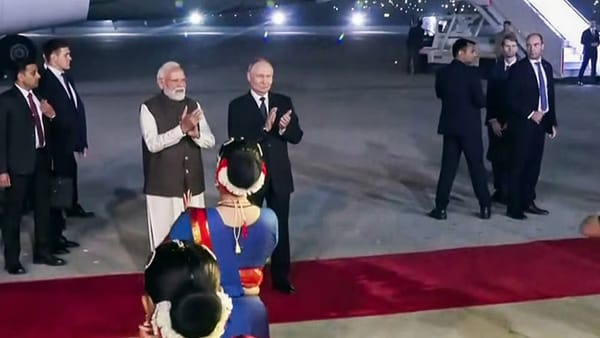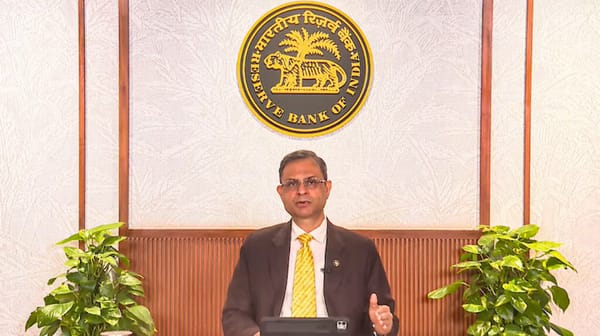Deepavali celebrations at Ramakrishna Mission

This is certainly the climax of all celebrations at Ramakrishna Mission. On 19th October, the Ramakrishna Mission celebrates Deepavali in the form of Kali Puja which is called also Diwali. It is the victory of light over darkness and a jubilant ceremony will be performed with Bhajans, Arti and sumptuous prasad specially prepared by the volunteers. During the occasion, from 7:30 pm at the Temple hall Ms. Sharmistha Das, a renowned singer from Kolkata will perform devotional songs.
Kali Puja, also known as Shyama Puja or Mahanisha Puja,[1] is a festival dedicated to the Hindu goddess Kali, celebrated on the new moon day of the Hindu month
Kartik especially in West Bengal, Odisha, Assam andBangladesh. It coincides with the pan-Indian Lakshmi Puja day of Diwali. While the Bengalis, Odias, Assamese and Maithils adore goddess Kali, on this day the rest of India worships goddess Lakshmi on Diwali. SriKali Kali pooja Is particularly pertinent to devotees of Sri Ramakrishna.
The festival of Kali Puja is not an ancient one. Kali Puja was practically unknown before the 18th century; however, a late 17th-century devotional text Kalikamangalkavya –by Balram mentions an annual festival dedicated to Kali.[3] It was introduced in Bengal during the 18th century, by King (Raja) Krishnachandra of Navadvipa.[2] Kali Puja gained popularity in the 19th century, with Krishanachandra’s grandson Ishvarchandra and the Bengali elite; wealthy landowners began patronizing the festival on a grand scale.Along with Durga Puja, Kali Puja is the biggest festival in Bengal and Assam.The pandals also house images of god Shiva - the consort of Kali, Ramakrishna and Bamakhepa- two famous Bengali Kali devotees along with scenes from mythology of Kali and her various forms along with Mahavidyas, sometimes considered as the "ten Kalis". The Mahavidyas is a group of ten Tantric goddesses headed by Kali.] People visit thesepandals throughout the night. Kali Puja is also the time for magic shows and theatre, fireworks
in the Kalighat Temple in Kolkata and in Kamakhya Temple in Guwahati, Kali is worshipped as Lakshmi on this day so as to reflect an essence of Vaishnava Haldars on Kali worship. The temple is visited by thousands of devotees who offer animal sacrifices to the goddess. Another famous temple dedicated to Kali in Kolkata is Dakshineswar Kali Temple. The famous Kali devotee Ramakrishna was a priest at this temple. The celebrations have changed little from his time.Phalaharini Kali Puja is specially important in the life Sri Ramakrishna and Sri Sarada Devi, since on this day in 1872 SriRamakrishna worshipped Sri Sarada Devi as Shodashi
Sri Sri Kali Pooja Coincides with Diwali the Festival of Lights
Sri Sri Kali pooja coincides with Diwali where the Mother Goddess Mahalakshmi is consecrated Deepawali or Diwali is the biggest and the brightest of all Hindu festivals. It is the festival of lights: deep means "light" and avali "a row," or "a row of lights." Diwali is marked by four days of celebration, which literally illuminates the country with its brilliance and dazzles all with its joy.
The Diwali festival occurs in late October or early November. It falls on the 15th day of the Hindu month, Kartik, so it varies every year.
Each of the four days in the festival of Diwali is separated by a different tradition. What remains true and constant is the celebration of life, its enjoyment, and a great sense of goodness.
Historically, Diwali can be traced back to ancient India. It most likely began as an important harvest festival. However, there are various legends pointing to the origin of Diwali.
Some believe it to be the celebration of the marriage of Lakshmi, the goddess of wealth, with Lord Vishnu. Others use it as a celebration of her birthday as Lakshmi is said to have been born on the new moon day of Kartik.
In Bengal, the festival is dedicated to the worship of Mother Kali, the dark goddess of strength. Lord Ganesha—the elephant-headed god, and symbol of auspiciousness and wisdom—is also worshiped in most Hindu homes on this day. In Jainism, Deepawali has the added significance as marking the great event of Lord Mahavira attaining the eternal bliss of nirvana.
Diwali also commemorates the return of Lord Rama (along with Ma Sita and Lakshman) from his fourteen-year-long exile and vanquishing the demon-king Ravana. In joyous celebration of the return of their king, the people of Ayodhya, the capital of Rama, illuminated the kingdom with earthen diyas (oil lamps) and burst crackers.
THE SPIRITUAL SIGNIFICANCE OF DIWALI
Beyond the lights, gambling, and fun, Diwali is also a time to reflect on life and make changes for the upcoming year. With that, there are a number of customs that revelers hold dear each year.
Give and Forgive. It is common practice that everyone forgets and forgives the wrongs done by others during Diwali. There is an air of freedom, festivity, and friendliness everywhere.
Rise and Shine. Waking up during the Brahmamuhurta (at 4 a.m. or 1 1/2 hours before sunrise) is a great blessing from the standpoint of health, ethical discipline, efficiency in work, and spiritual advancement. It is on Deepawali that everyone wakes up early in the morning. The sages who instituted this custom must have cherished the hope that their descendants would realize its benefits and make it a regular habit in their lives.
Unite and Unify. Diwali is a great unifying force and it can soften even the hardest of hearts. It is a time when you will find people mingling about in joy and embracing one another with love.
Those with keen inner spiritual ears will clearly hear the voice of the sages, "O Children of God unite, and love all". The vibrations produced by the greetings of love, which fill the atmosphere, are powerful. When the heart has considerably hardened, only a continuous celebration of Deepavali can rekindle the urgent need of turning away from the ruinous path of hatred.
Prosper and Progress. On this day, Hindu merchants in North India open their new account books and pray for success and prosperity during the coming year. Everyone buys new clothes for the family. Employers, too, purchase new clothes for their employees.
Homes are cleaned and decorated by day and illuminated by night with earthen oil lamps. The best and finest illuminations can be seen in Bombay and Amritsar. The famous Golden Temple at Amritsar is lit in the evening with thousands of lamps placed all over the steps of the big tank.
This festival instills charity in the hearts of people and good deeds are performed everywhere..
Illuminate Your Inner Self. The lights of Diwali also signify a time of inner illumination. Hindus believe that the light of lights is the one that steadily shines in the chamber of the heart. Sitting quietly and fixing the mind on this supreme light illuminates the soul. It is an opportunity to cultivate and enjoy eternal bliss.In each legend, myth, and story of Deepawali lies the significance of the victory of good over evil. It is with each Deepawali and the lights that illuminate our homes and hearts, that this simple truth finds new reason and hope.Diwali is celebrated around the globe.




